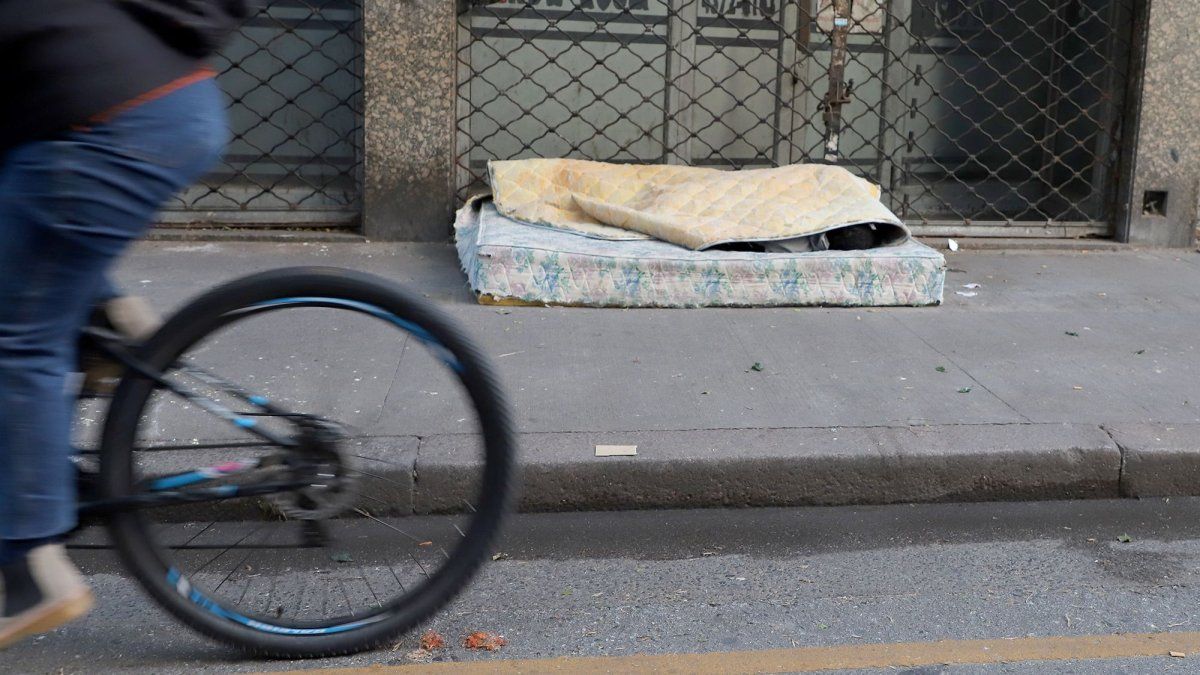According to a new report published by the University of Buenos Aires (UBA)one in four young people is indigent and is outside the system. Furthermore, they revealed that Destitution in the population between 14 and 29 years old grew more than 7.2% in the last six monthsas well as the persistence of the gender gap in the labor market.
The study was carried out by the RA Center from the Faculty of Economic Sciences of the UBA, where they analyzed the situation of the labor market and poverty in Argentina, with a special focus on the young population. These data come from the Permanent Household Survey (EPH-INDEC) which defines “young” as a person who is between 14 and 29 years old.
The sector on which the analysis is focused represents almost a quarter (24.5%) of the population, which is equivalent to 7,258 million young people and where the distribution is 51% men and 49% women.
As for the employment ratethey explain that ”for the total population it is registered at 44.3% for the first quarter of 2024”. And they detailed: ”In the group of young people, the employment rate is significantly lower, with 34% for women and 45.2% for men. Although the total employment rate shows a slightly upward trend, employment among young people remains at relatively low levels. Young women have a lower employment rate than young men, reflecting a persistent gender gap in the labor market”.
uba reports employment rate.png
On the other hand, the poverty rate and the indigence rate show an upward trendwith a higher incidence in young people than in the total population. ”The greater vulnerability of young women in the labor market stands out, evidenced in the unemployment rate and the poverty rate. Destitution among young people grew by more than 7.2% in the last six months,” the report says.
From these data, the authors of the writing observe ”inversely proportional trends in the last seven years” in terms of the employment rate of young men and women. ”The highest point of the gender gap in the employment rate was suffered by young women during the pandemic (4th quarter of 2020), at that time we could indicate that out of every 3 workers only 1 was a woman.” Furthermore, they highlighted that “the gap between men and women can be measured through the overrepresentation of employed men over women.”
Currently, they mention a new growth in this overrepresentation, “from which in the first quarter of 2024 there are 1.51 young men employed over 1 young woman employed.”
A ”chilling” fact about homelessness in young people
On the other hand, they highlighted that ”young people suffer from poverty much more than the average in society”claiming that The gap between poor young people and poor people was never less than 6 points and currently increases to 7%significantly affecting their ability to accumulate human capital and, consequently, the income of their entire working life.
Regarding indigence, they classified its indicator as ”spooky”: ”At the beginning of this year, during the first quarter of 2024, a quarter of the youth in Argentina fell out of the system and lives in poverty. This cruel and serious indicator has never seen a similar measurement. Let’s remember that being homeless means not being able to cover the necessary amount of daily meals,” they explained.
Finally, they added that destitution among young people grew more than 7.2% in the last six months: ”In the interannual comparison for the first quarters of the period where both poverty and destitution grew substantially (2023/2024 ) you can see a slightly higher incidence of men over women. However, in the 2017/2024 series it is not possible to identify clearly disparate trends by gender.”
poverty uba.png

”Young people suffer from poverty much more than the average in society.”
UBA
indigence uba.png

Homelessness among young people grew more than 7.2% in the last six months.
UBA
Source: Ambito




